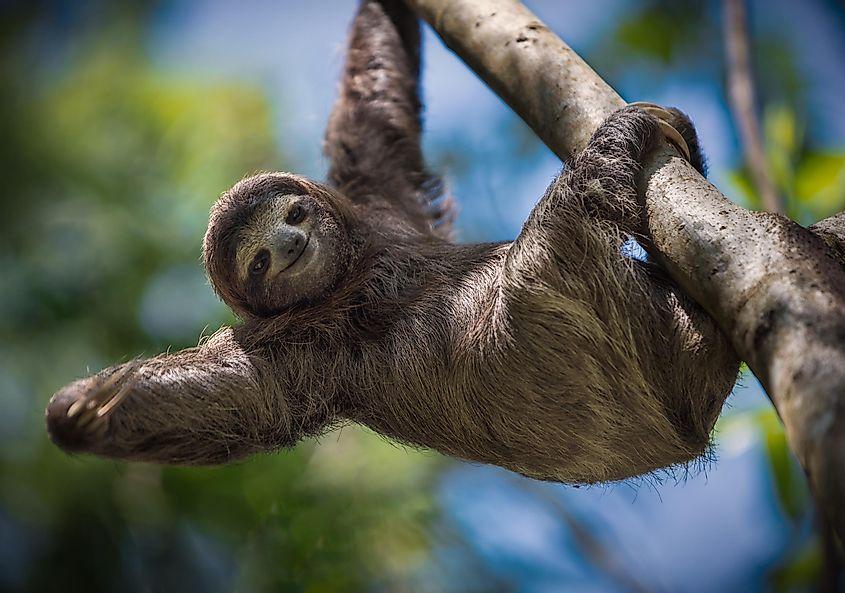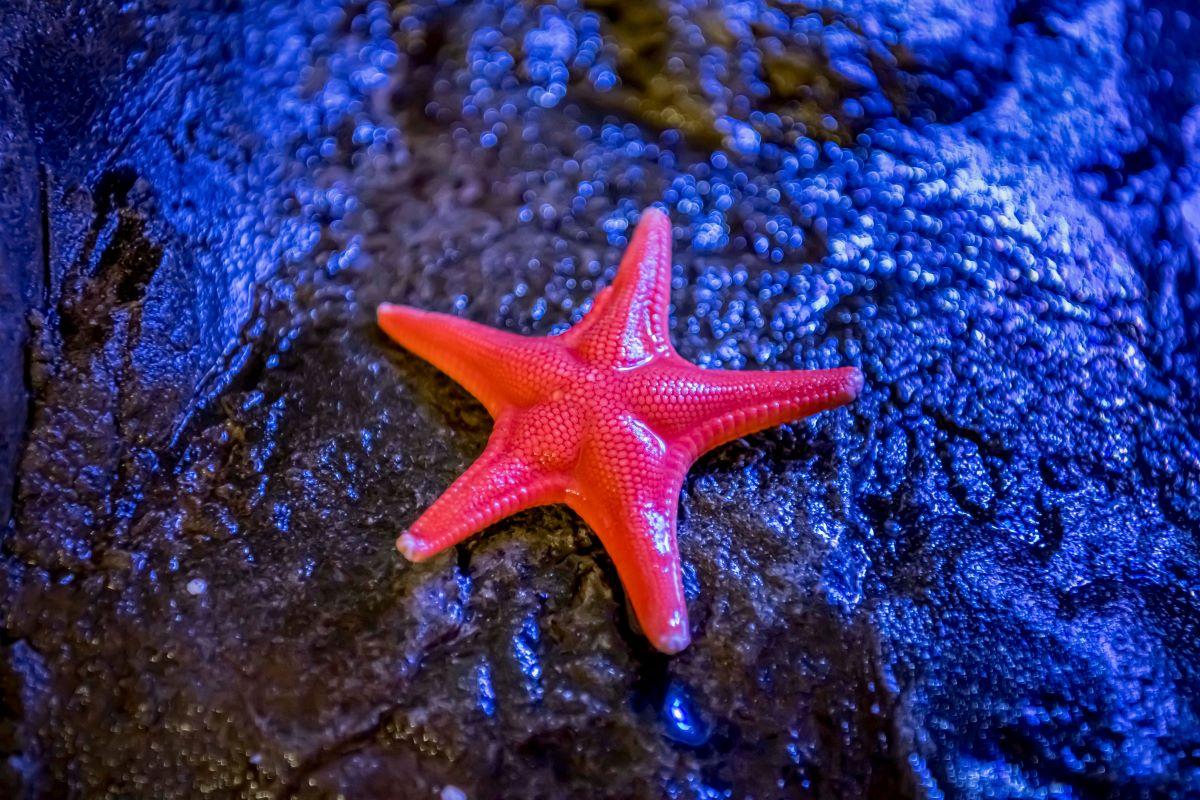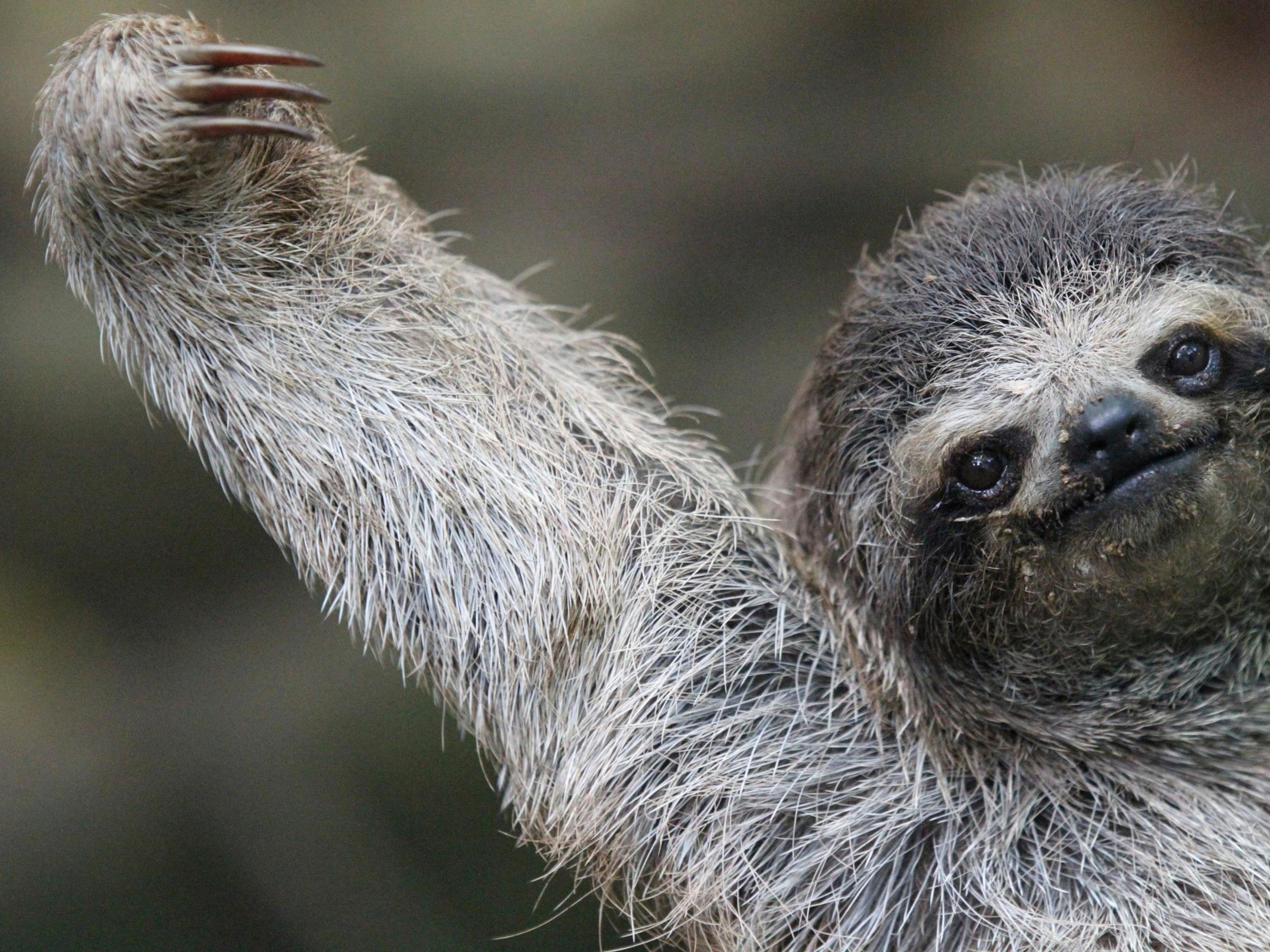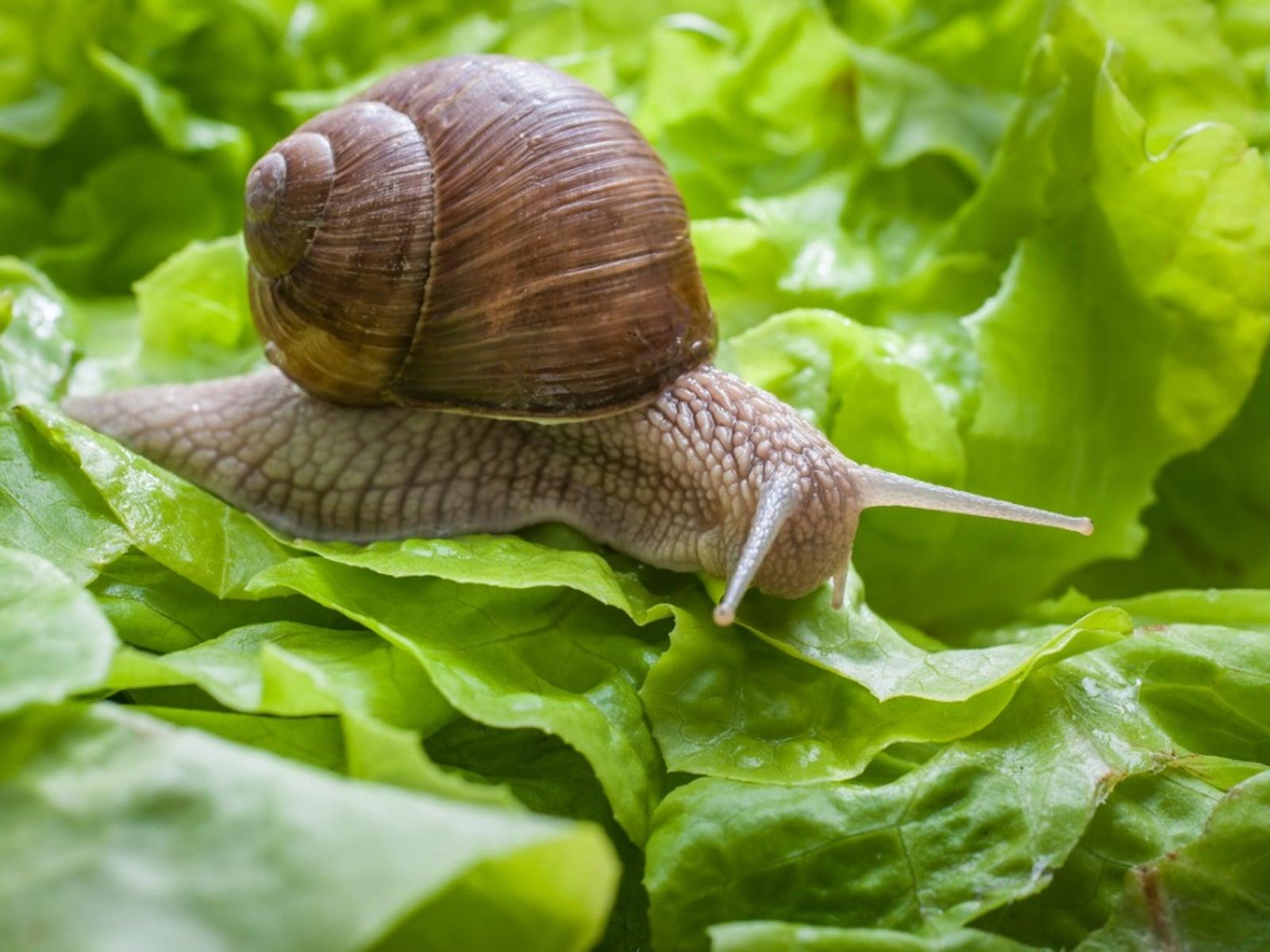Are you curious about the slowest animals in the world? While some animals are known for their speed, others are known for their leisurely pace. In this article, we will explore the top 8 slowest animals in the world.
From sea creatures to land animals, we will take a closer look at how these animals move and why they move so slowly. You may be surprised to learn just how slow some of these animals can be!
You are reading: The Top 8 Slowest Animals In The World

The Top 8 Slowest Animals In The World
Sea Anemone

Sea anemones are fascinating creatures that are named after and resemble flowers, but they are actually invertebrates related to corals and jellies. They are classified in the phylum Cnidaria and the order Actiniaria.
A typical sea anemone is a single polyp attached to a hard surface by its base, but some species live in soft sediment, and a few float near the surface of the water. They have a columnar trunk topped by an oral disc with a ring of tentacles and a central mouth.
The tentacles can be retracted inside the body cavity or expanded to catch passing prey. Sea anemones are found in both deep oceans and shallow coastal waters worldwide. They can be found in a range of temperatures, from the cold water of the north Pacific to the warm water of the Caribbean, and live at various depths, from the shallower waters of the tidal zone up to depths of 1.8 miles (3,000 meters).
Sea anemones are carnivorous, feeding on tiny plankton or fish. Their stinging tentacles are triggered by the slightest touch, firing a harpoon-like filament called a nematocyst into their prey. Once injected with the paralyzing neurotoxin, the prey is guided into the mouth by the tentacles.
Most sea anemones are sessile, meaning they attach to a surface and remain fixed for long periods. Any movement is extremely slow, and requires a time-lapse camera to view.
Starfish

Starfish, also known as sea stars, are marine invertebrates belonging to the class Asteroidea. There are approximately 2,000 species of starfish that live in marine waters all over the world, from warm, tropical zones to frigid, polar regions.
Starfish have a central disc and usually five arms, although some species have more. The upper surface of the starfish may be smooth, granular, or spiny, and is covered with overlapping plates.
Many species are brightly colored in various shades of red or orange, while others are blue, grey, or brown. Starfish have tube feet operated by a hydraulic system and a mouth at the center of the oral or lower surface. They move by using tiny tube feet located on the underside of their bodies.
Adult sunflower sea stars can move at the astonishing speed of one meter per minute using 15,000 tube feet. Tube feet also help sea stars hold their prey. Starfish are related to sand dollars, sea urchins, and sea cucumbers, all of which are echinoderms, meaning that they have five-point radial symmetry.
However, this does not mean that all starfish have five arms, and species with 10, 20, or even 40 arms exist. If one of these arms is lost, a starfish has the amazing ability to regenerate it.
Three-Toed Sloth

Read more : Discover 10 Types Of Black Beetles
The three-toed sloth is a fascinating mammal that is found throughout Central and South America. They are the only members of the genus Bradypus and the family Bradypodidae.
There are four living species of three-toed sloths: the brown-throated sloth, the maned sloth, the pale-throated sloth, and the pygmy three-toed sloth. Three-toed sloths are about the size of a small dog or a large cat, with the head and body having a combined length of around 45 cm (18 in) and a weight of 3.5–4.5 kg (8–10 lb).
Unlike the two-toed sloths, they also have short tails of 6–7 cm (2–3 in), and they have three clawed toes on each limb. All sloths have three digits on their hindlimbs, but the difference is found in the number of digits on the forelimbs, thus they are sometimes referred to as three-fingered sloths. However, sloths are generally regarded as quadrupeds.
Three-toed sloths are arboreal (tree-dwelling), with a body adapted to hanging upside-down from branches. They are famously slow-moving, traveling at an average speed of 0.24 km/h (0.15 mph).
Garden Snail

Garden snails are known for their slow movement, and they move by gliding along on their muscular foot, which is lubricated with mucus and covered with epithelial cilia. This motion is powered by succeeding waves of muscular contractions that move down the ventral of the foot.
Snails move at a proverbially low speed, with a typical speed for an adult being 1 mm/s. The top speed of a garden snail is 0.1 km/h, which feels like 2.7 km/h. According to experts, snails can travel a distance of one-tenth of an inch (0.28 cm) in one second.
The fastest moving snail is the common garden snail, which covered a distance of 12.2 inches (31 cm) in 2 minutes and 13 seconds. The average speed of a snail clocks in at around 0.03 mph.
Snails produce mucus to aid locomotion by reducing friction, and the mucus also helps reduce the snail’s risk of mechanical injury from sharp objects. This means that they can crawl along sharp objects like a straight razor and survive without injury.
Giant Tortoise
The giant tortoise is known for its slow movement, and it is one of the slowest animals in the world.
The Aldabra giant tortoise, which is one of the largest species of tortoise, can travel at speeds of up to 0.3 miles per hour (0.13 meters per second) .
The Galapagos tortoise, which is another species of giant tortoise, amble along at an astonishing 0.16 miles per hour (0.26 kilometers per hour). Generally, giant tortoises are slower than smaller tortoise species.
While giant tortoises are not known for their speed, they are known for their longevity. The Aldabra giant tortoise can live up to 255 years, making it one of the longest-living animals in the world.
Banana Slug
Banana slugs are a type of gastropod mollusk that are native to the dense, moist forest floors of the Pacific Northwest, ranging from Central California to Alaska. They are named for their resemblance to a ripe banana and are often bright yellow, although they can also be brown, white, and green.
Banana slugs move by contracting and relaxing their muscular foot, generating a wave that propels them slowly forward. Estimates vary, but banana slugs typically move at a pace of about 3-4 inches per minute, with a maximum speed of over 6 inches per minute reported.
According to one expert, a banana slug covered 6.5 feet in two hours, which is a speed of 0.000275 meters per second. While banana slugs are very slow, they are typically faster than their garden snail cousins.
Read more : 18 Types Of Penguins
Banana slugs use slime to help them adhere to surfaces and increase suction so they can glide along vertical surfaces or even upside down. They have one foot that makes muscular contractions, which secrete mucus that turns into slime to lubricate their path to help them move.
Slow Loris
According to the search results, the slow loris is a slow-moving primate that is found in South and Southeast Asia. While they are generally slow movers, they are capable of bursts of speed when hunting prey.
Slow lorises are slow and deliberate climbers, and often hold on to branches with three of their four limbs. To move between trees, they carefully grip the terminal branches of the neighboring tree and pull themselves across the small gap.
Slow lorises are sold locally at street markets but are also sold internationally over the Internet and in pet stores. They are considered one of the rarest primates.
Slow lorises have a slow metabolism, but not as slow as a sloth’s. They typically use their speed only when they see food, and otherwise, they are very tame.
The slow loris moves at a pace of 1.18 miles per hour, but they can speed up when it’s time to strike prey. They are also able to travel around 8 kilometers in one night.
Manatee
Manatees are aquatic mammals that are known for their gentle nature and slow movements.
Manatees are generally slow swimmers, moving at a rate of 3 to 5 miles per hour. However, manatees are capable of reaching speeds of up to 15 miles per hour in short bursts.
Manatees use their tails to propel themselves forward in an up and down motion.
The speed of manatees is important to consider when boating in areas where they are present. Manatee speed zones have been established in some areas to protect these animals from collisions with boats.
In summary, manatees are generally slow swimmers, but they are capable of reaching faster speeds in short bursts. It is important to be aware of manatee speed zones when boating in areas where they are present to avoid collisions and protect these gentle creatures.
FAQS
1. What is the slowest animal in the world?
The slowest animal in the world is the sea anemone, which moves at a pace of about 1 centimeter (about 0.39 inches) an hour.
2. What are some other slow animals?
Other slow animals include starfish, three-toed sloths, garden snails, giant tortoises, banana slugs, slow lorises, and manatees.
3. Why are some animals so slow?
Some animals are slow because they have adapted to a sedentary lifestyle, while others have evolved to move slowly to conserve energy or avoid predators.
4. Can slow animals move faster if they need to?
Yes, some slow animals are capable of moving faster in short bursts when they need to, such as when hunting prey or avoiding danger.
5. How do slow animals protect themselves from predators?
Slow animals have developed various strategies to protect themselves from predators, such as camouflage, toxic secretions, and hard shells. Some slow animals also rely on their ability to blend in with their surroundings or remain motionless to avoid detection.
Source: https://petstutorial.com
Category: Animals










